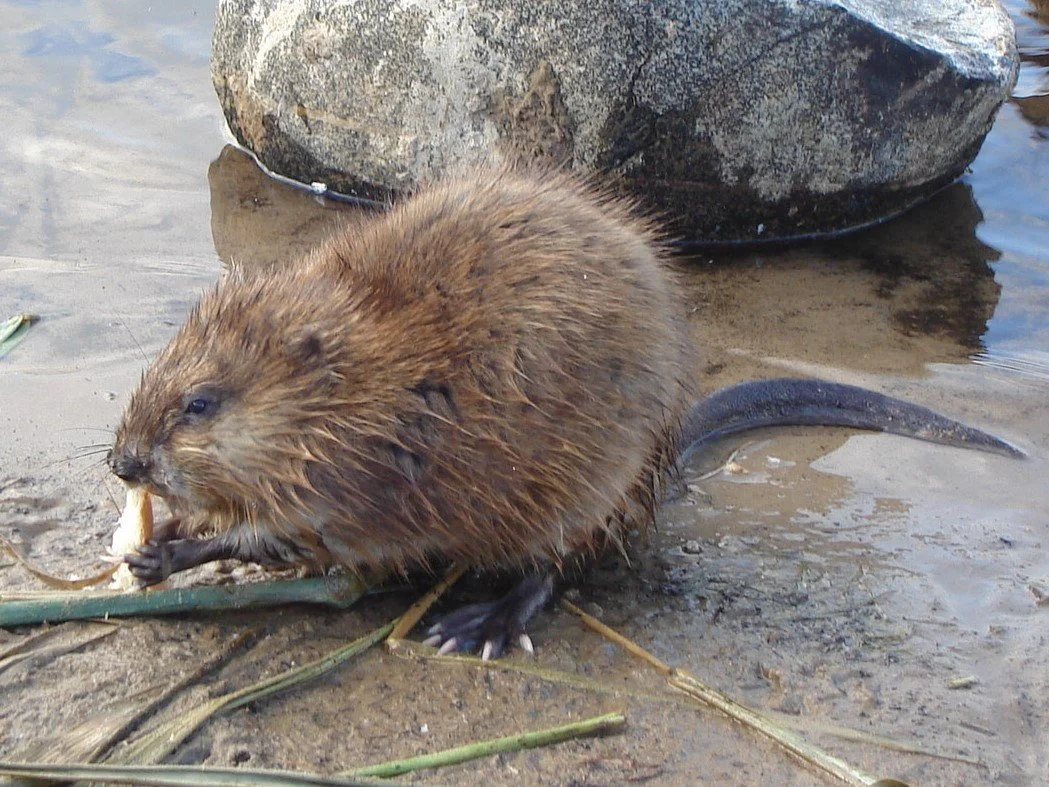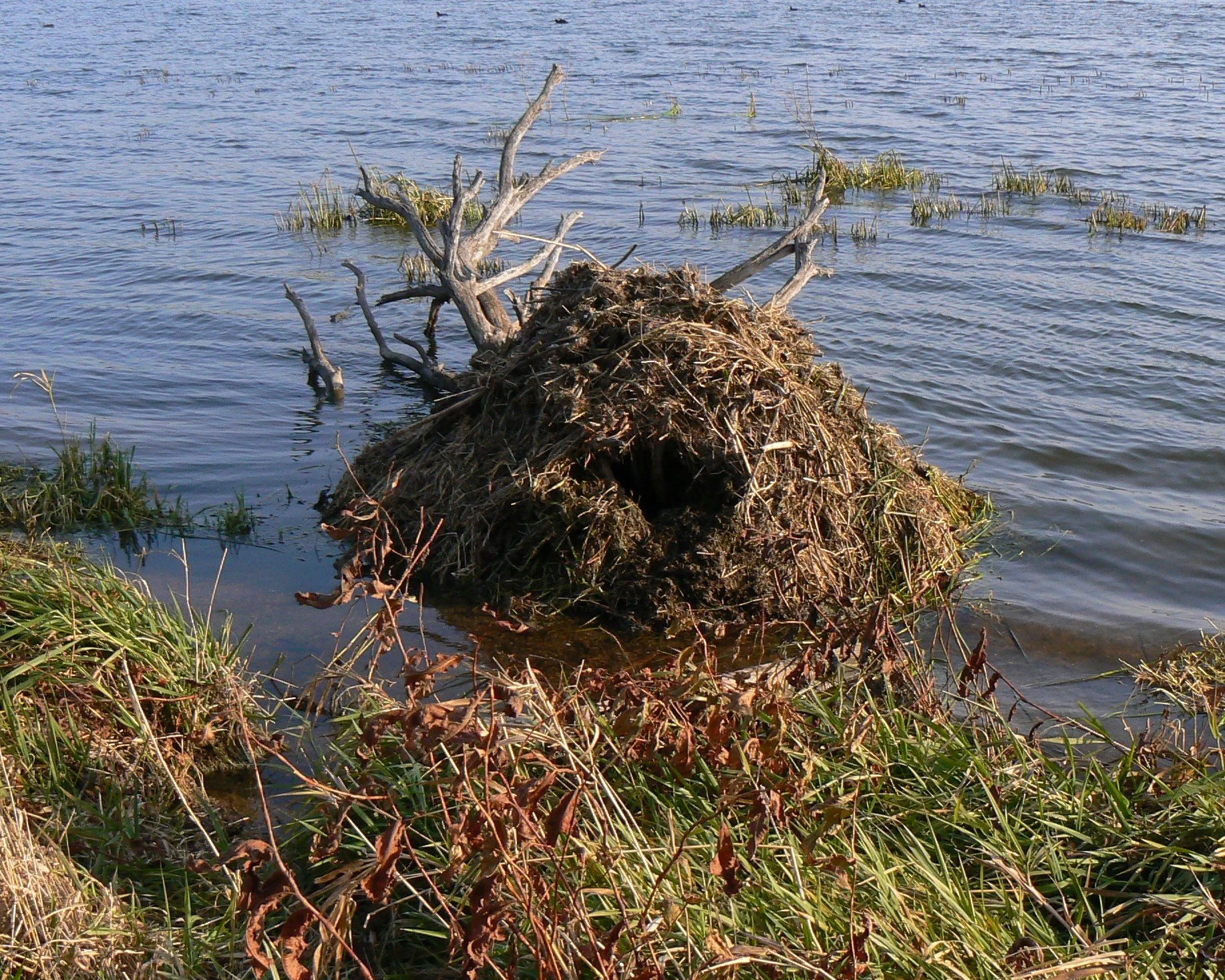Mike Freeman: The mysterious and alarming decline of muskrats - much needed waterway engineers
Muskrat feeding.
— Photo by mikroskops
No one would call muskrats “charismatic megafauna.” They’re pudgy, small and just rat-like enough. Semiaquatic, they inhabit sloughs, creeks, and swamps people rarely visit. Muskrats have been considered so prevalent and unremarkable that even people in tune with environmental goings-on have been unaware of the species’ 50-year decline. Biologists noted the nationwide trend early through trappers’ harvest data, but earnest study is a recent phenomenon.
“It would be like robins suddenly declining,” said John Crockett, a University of Rhode Island graduate student studying the state’s muskrat distribution. “No one ever thought muskrats would be in trouble.”
Muskrat lodge built from vegetation
In trouble they are, though, with unsettling implications. The first of these are the animals themselves and their ecological role. Muskrats feed on wetland vegetation and build covered winter “lodges” from it. This opens wetlands up, thinning plants such as cattails and bulrushes to create what Crockett called “patchy ecosystems” that sustain greater biodiversity, the way big wind events, pest outbreaks, and managed timber cuts open forests to new growth, attracting different suites of birds and plant communities than uniform woodlands.
With dwindling muskrat populations, dense vegetation blunts water flow, changes oxygen levels, and can pare back fish and invertebrate life.
“Muskrats are crucial wetland engineers,” said Laken Ganoe, another URI Ph.D. candidate, who published a 2020 paper on muskrat decline while at Penn State. “Similar to beavers, their activity can change hydrology, stream bank structure, and help maintain functioning wetlands. They’re also a key prey source for species such as mink, birds of prey, and raccoon. The wetlands they help maintain provide ecosystem services such as water filtration and air purification, and declining muskrat populations can throw these out of balance.”
In southern New England, muskrats inhabit fresh and brackish water, from nameless rills to big rivers to salt marshes. Their increasingly diminished presence is bad enough, but equally worrisome is why it is happening, in large part because that isn’t known.
Laurence C. Smith of the Institute at Brown (University) for Environment and Society has started a DNA study to determine muskrat presence in Rhode Island waterways. He described the current science, which isn’t far beyond the spit-balling phase.
“Researchers are just beginning to study this problem and there are numerous hypotheses being tested, including disease, habitat loss, and climate change,” he said.
Crockett added nuance, saying that habitat fragmentation and isolation are plagues for all species including muskrats, and that ecosystem degradation, including water quality, is another potential culprit. Ganoe’s Pennsylvania study looked at traditional muskrat diseases such as tularemia, along with ailments that might relate to cyanobacteria and legacy industrial chemicals. While she found various levels of concern, nothing resembling a widespread killer turned up. Across the United States and Canada, she said, there seems to be consensus that “there’s not one overarching cause of the decline, but rather a dozen puzzle pieces working in conjunction.”
That muskrats’ woes result from a grim grab bag of sprawl, industry, pollution and climate change is likely, which only compounds the worry, as muskrats have already proven that they are built for the Anthropocene. Highly prolific and mobile, the animals thrived in the notoriously unregulated mid-20th Century, but are listing now. Why is unknown, but muskrats once rated with pigeons and cockroaches as the creatures most likely to survive us, so finding that answer is imperative.
Trapper harvest data isn’t infallible, but biologists gain much from it. Charlie Brown, the Rhode Island Department of Environmental Management’s recently retired furbearer biologist, studied harvest data throughout his 31-year professional tenure.
“It’s difficult to rely on harvest data exclusively,” he said. “But it’s valuable. Rhode Island requires exact harvest data in order to renew your license … whereas that information is voluntary in other states, so we have very specific numbers going back to 1949.”
In the 1950s, Brown said, Rhode Island trappers took 10,000 muskrats a year. During the 2019-2020 season, just 47 were killed. Declining trapper numbers affect that, but not enough for a drop that steep.
There’s some counter-intuition to wrestle here. On paper, conditions favor muskrats more now than in the 1950s to ’70s, when wetlands were blithely drained and factories dumped effluent everywhere. In Barrington, R.I., where Brown grew up, a lace dye company made Bullocks Point Cove turn whatever color stain it used that day.
“But muskrats were still there,” Brown said. “And in big numbers.”
Crockett said even today one of the highest muskrat concentrations he has found is on the Pawtuxet River right under Interstate 95.
Wetland acreage, too, has remained stable during the muskrats’ decline period. That marshes are no longer drained and rivers no longer run purple is great news. Yet, muskrats boomed during these conditions and badly falter now.
With research just ramping up, speculation remains the only map. Waters are still loaded with farm and lawn runoff, along with plastic pollution, though no direct evidence currently links these with muskrat decline. Invasive aquatic flora jumps out, too. Smith is testing the replacement of native plants like cattails (Typha) by phragmites, the invasive reeds that now dominate fresh and brackish waters.
“Phragmites creates more sterile wetlands and chokes out open-water patches favored by muskrats,” he said.
Laura Meyerson, a URI professor whose research focuses on invasive species, with a particular emphasis on plants, points to phragmites and other invasive flora as potential reason for muskrat decline.
“Water chestnut is particularly nasty,” she said. “It grows floating mats that have little nutritional value. In fresh and salt water, phragmites has outcompeted Typha. Muskrats rely on Typha for their carbohydrate-rich rhizomes [roots] and the leaves and stems to build their lodges.”
Mike Freeman is an ecoRI News contributing reporter.

